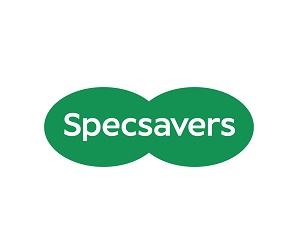
“When dealing with people, remember you are not dealing with creatures of logic, but with creatures bristling with prejudice and motivated by pride and vanity.” – Dale Carnegie, How to Win Friends and Influence People
Most of us believe we make rational decisions. But the reality is that we usually make emotional decisions and then attempt to justify those decisions with logic. This is true of most purchase decisions — we tend to buy not what we really need, but what we really want. How else to explain the enduring appeal of luxury goods and travel when all we really need is bread, clothing and shelter? The major players in the consumer sphere have this figured out. Modern designs, luxury logos and exclusive shopping experiences all provide an emotional jolt for buyers. The social acceptance you get when you visit a Starbucks store, for example, is likely the reason for choosing it, rather than the taste of the coffee. To be truly successful in today’s business world, therefore, you need to sell more than just the product. It’s necessary to also sell the feelings that come with the purchase, the upscale position it suggests and the emotions it evokes in the buyer. Essentially, you are selling a dream of who your customer can imagine themselves to be. How the Brain is Wired It is interesting to note that the most primitive parts of our brains are largely responsible for the decisions we make on a day-to-day basis. Research shows that the brain’s limbic system — the part responsible for emotional responses — has a large role to play in decision-making. Memory synapses (past emotions) create biases within this primitive part of your brain, which then feed into a behavioural response. When we understand that most decisions contain an emotional component, it becomes clear that triggering the right feeling — or evoking the wrong one — will be the differentiating factor on whether a prospect buys from you or not. Emotions as Part of the Sales Process As professionals, our key responsibility is in providing the best solution for our clients’ health and wellbeing. But helping customers achieve a desired state of emotion as part of this process should not be perceived negatively. Most products and services, including eyewear, are designed to satisfy a customer desire or want, and in fact, satisfying those desires will always contain an emotional component. Here are some of the key emotional factors that can drive customer decisions and help you to achieve a satisfying outcome for your clients:
- Achievement and status. People have an inherent desire to feel successful and to show off their accomplishments. Cars, jewelry and houses all signal their achievements, and branded products including eyewear are no exception. To tap into this emotional response, be attentive to the vehicle a person drives, the clothes and shoes that they wear or the purse they carry to get a clear indication of how they want to present themselves to the world. It’s then possible to subtly use that desired image as a selling point during your conversations.
- Happiness. In today’s world, a sense of ease and comfort greatly influences purchase decisions. Customers love buying easy to use products that create pleasure and simplify their lives. Open-ended lifestyle questions are a great way to understand your clients’ priorities, allowing you to focus on the value of products that will best fit their needs and to emphasize the personal benefits to them. Your customers will love you for it.
- A sense of belonging. Throughout our evolution as a species, we have needed the sense of belonging, whether to a tribe, culture, country or family. In today’s more consumer-driven world, this sense of belonging is often satisfied by products; for example, some people identify as iPhone users, while others adhere to the Android camp. Your clients, therefore, will often gravitate towards fashion trends, brands or specific products that align with who they consider likeminded. If all the cool kids are wearing Ray-Bans, some will want Ray-Bans to be part of that group.
As you develop your emotional selling skills, here are FIVE points to remember that will help you to sell more effectively to clients’ emotional needs:
- Subtly mirror your client: Your words, clothes and mannerisms will arouse emotions (both positive and negative) in your clients. By subtly mirroring a client’s language and actions you appear more relatable and empathetic.
- Take note of non-verbal communication: Non-verbal communication influences a person significantly more than verbal communication. One study indicated that effective communication is based on only 7% of what we actually say, while non-verbal communication such as facial expression and body language accounts for about 55% and 38% is based on our tone of voice.
- Understand emotional awareness: Develop your ability to identify and manage your own emotions and the emotions of others. The last thing you want to do is frustrate or infuriate a client.
- Understand Emotional Intelligence: Emotional intelligence is distinct from logical reasoning or linguistic ability.
- Be cognization of your client’s emotional response: Being able to touch a client’s emotional response rather than simply appealing to logic can expedite decision-making and will leave you and your customer both feeling better about the purchase.
Perhaps the most important point to remember is that by leading with empathy, you will begin to truly understand both your clients’ practical and emotional needs. In doing so, you have the opportunity to create a more satisfying outcome for them and improve your sales results in the process. Reprinted from Optik Magazine – November – December 2021 issue Contribution from shan Khan and Kazeem Merali.


















